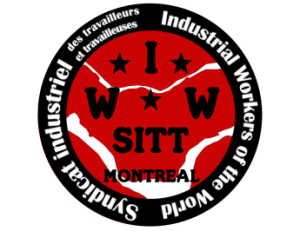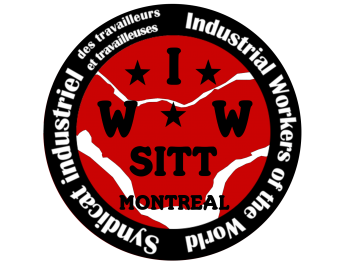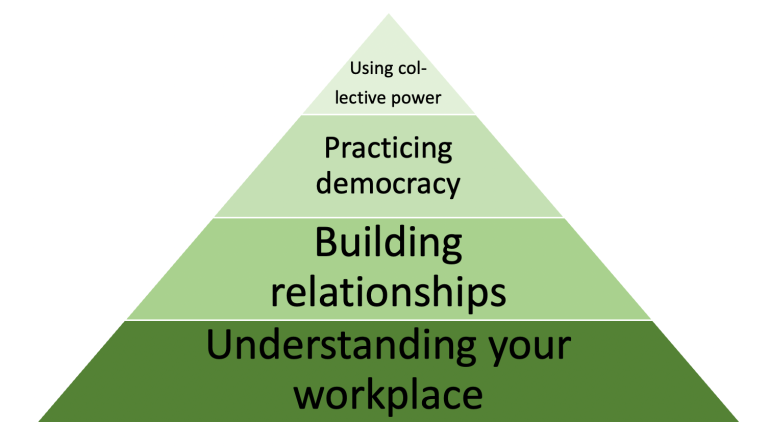Immigration Series, chapter 1 : Rise and Misery of Roxham Road
I admit it, I have a passion for extreme sports. I love whitewater kayaking, I had a blast when I tried kitesurfing and I'm just waiting to finish my studies to have enough time to devote myself to roller derby. But decidedly, the extreme sport that makes me experience the most strong emotions, it’s the absolutely endless race to find your way through the ever-rebuilding maze that is our immigration system. You probably won't believe me, but I swear it's really exciting!
Since Canadian immigration policies are a headache for absolutely everyone, including myself, I decided to make a series of articles aimed at popularizing all this. If all goes as planned – but please, don’t expect too much – I hope to finish a text on temporary immigration status and human trafficking and to lay another on the history of racist immigration policies since confederation. I am also open to suggestions. I like challenges and I am a bit proud, bring it your trick question!
Short, we are going strong with a topic that is far too hot for my text to remain up to date for a very long time, and I named: Safe Third Country Agreement and Roxham Road.
Hope this helps you understand the issues better.!
A few basic notions by way of introduction
- No one is illegal. Never.
People are sometimes without status or papers. Sometimes they don't have the right papers, but they are never “illegal”, because not being in an irregular situation with regard to one's immigration status is an administrative offense, not criminal. Exactly like a parking ticket. On the other hand, it is a criminal offense to hire people who do not have a work permit. It can sometimes even be seen from the angle of human trafficking in certain circumstances.. We will see this in more detail in the next edition.!
- Extremely few people arrive in Canada undocumented.
This is partly due to the geographical location of the country.. Indeed, unless you go through the United States, only land border with Canada, it is absolutely necessary to take a boat or a plane to come to the country. Or, unless you come in a container on board a cargo ship – we are talking about twenty people a year over the last few years. 5 last years1 – you will need at least a passport and a visa (working, study or tourism)2 to be able to board these transports and finally enter the country.
People who are without status in Canada have to very, vast majority already had legal authorization to be here and lost it along the way. This also applies to people crossing the border on foot from the United States.. This is my next point.
Roxham Road, a specter that haunts conservatives
The Roxham Road which, in another life, dreamed of being recognized across the country for being the gateway to the incomparable Parc Safari, is now rather famous for being the main gateway to Canada or the United States – depending on which way you take it3 – for migrants in search of a more stable life.
Indeed, passing said park, Roxham Road narrows into a kind of country road surrounded by houses far apart from each other separated by fields and patches of forest. The path continues in the same way on the American side before becoming a busier road again a few kilometers further on.. On the border between Canada and the United States: nothing. No official border post, only an RCMP command post and a mound that appears to be artificially constructed to mark the border.

Source RCMP Post : Google Map, 26 January 2023

End of Roxham Road on the Canadian side. Source : Google Map, 26 January 2023
This crossing point is by far the most popular among migrants., first and foremost for practical considerations. Indeed, rare are the border areas not controlled by customs officers that are crossed by an almost complete road. To cross elsewhere without facing a customs officer, you have to walk several kilometers without landmarks in the forest, which increases the risk of getting lost along the way.
Now, why people want to avoid going through customs? Contrary to messages bombarded by the anti-immigration right, it's not because these people have more "things to hide" than others.
To fully understand the origin of the popularity of Roxham Road, we have to go back to the very troublesome era of the War on terror decreed by the United States in the aftermath of the attacks on 11 September 2001. Thumbing up on the rumor that the attackers of the twin towers had joined the United States through the Canadian border – a myth that will later be dismantled – the Republicans of George W. Bush campaign for increased border control. It was felt that the Canadian border was a sieve for foreign nationals looking for work in the United States..
In this context, Canada and the United States signed theAgreement Between the Government of Canada and the Government of the United States of America for Cooperation in Determining Refugee Status Claims by Third-Country Nationals4 often referred to simply as the “safe third country agreement”.
Don't be surprised, this agreement, among other things, on the principle already well known at that time in Europe of… “safe third country”. Basically, this principle establishes the responsibility for the processing of asylum applications for the first State deemed safe which would have been crossed by foreign nationals during their migratory journey.
for example, a person from Latin America who would have visited the United States, then crossed to Canada before seeking asylum, would be automatically refused and sent back to the United States to process their application.
At the twist, is that the agreement provides an exception to this obligation for people who cross the border on foot without crossing a border crossing. So if we take the previous example, the person from Latin America could have their asylum file processed in Canada if they go through… Roxham Road!
Passing by this road, migrants know that they will not encounter customs officers, but they also know that RCMP officers will be on the other side to accommodate their asylum application from the first minutes of their stay in Canada.. Reason why people who cross there should not be qualified as "undocumented".
They are asylum seekers.
Until the March Biden-Trudeau deal 2023, the RCMP officers who were sent to this area did not have the mandate to determine whether the persons crossing had valid grounds for seeking the protection of Canada. They also had no right to send people back to the United States.. They therefore had to transport the migrants to what they call the “Immigration Monitoring Center” in Laval., read: a newly expanded prison. But do not worry, on the site of theCanada Border Services Agency we are assured that the dining rooms of the Laval prison are spaces with natural light5. #Canada, #PaysDesDroitsHumains, #Monk.
from jail, the identity of applicants will be verified. If they are not notorious criminals in their countries of origin, they will be released after some time with a temporary status until their request for protection is analyzed on the merits one to two years later, in front, there Immigration and Refugee Board of Canada.
[I had written a very long piece on the course of these kinds of hearings, but I realize that it probably does not interest anyone but me, so I'll spare you all that. To get a better idea of what these audiences look like, I invite you to read the excellent novel Boat people by Sharon Bala, translated into French under the same title. It's describing! For the others, just know that the process is terribly painful and traumatic for victims of violence. You should also know that the procedures are very expensive and that on average 30% files are rejected and therefore go to appeal6.]
The Biden-Trudeau agreement, a shit show populist flavor
First thing to know: the entire safe third country agreement is currently being challenged in the Supreme Court. This saga began in the first year of Trump's tenure in the United States. With its migration policies cowboy, Canadian advocacy groups stopped viewing the United States as a safe country for migrants and questioned the constitutionality of the deal that no longer respected, in their eyes, the charter of rights and freedoms. Hearings are over, a decision should be made shortly.
So do a hill on the side it is not particularly necessary since everything could be redone in a few months.
That said, the Biden-Trudeau agreement that came into effect on 25 mars 2023 confirms the rigorous application of the agreement on safe third countries. So, it closes the loophole that allowed asylum seekers to circumvent the agreement. For simplicity: Yes, the side deal technically closes Roxham Road with a few exceptions, especially for unaccompanied minors (on average 4 per day), people with family in Canada or people facing the death penalty in the United States (no joke!)7. Other applicants will no longer be able to, until further notice, enter Canada through this crossing point to seek asylum.
But hey… immigration is never that simple.
The Biden-Trudeau agreement provides for a new exception: if people cross from the United States and manage to avoid being caught by the authorities in the 14 early days, they will be able to seek asylum in Canada. How will they be able to prove the exact time of their crossing to have access to this measurement? It remains a mystery! I am so looking forward to the case law that will analyze evidence based on the veracity of the plaintiffs' Tim Horton receipts... Big legal candy!
Finally, the new agreement provides that Canada will accept 15,000 more migrants this year from the “western hemisphere”. What does all this mean? What status will these people have?? Will they be here temporarily or permanently?? They will be asylum seekers or refugees? Honestly, it's really confusing! Even Minister Fraser refused to elaborate on this…
Refugee or asylum seeker?
Finally, the distinction between the status of refugee and that of asylum seeker is often the subject of confusion.
You should know that you cannot apply for asylum from abroad. As we have just seen, people seeking asylum in Canada must do so once inside its borders. So, contrary to the media discourse presenting asylum seekers as “irregular migrants”, know that there is no “right” or “regular” way to claim asylum. When your life is threatened… well you go crazy! No matter how and usually without much thought or planning. Many asylum seekers are fleeing individual persecution, such as violence by armed groups (gang, drug traffickers, to be threatened for being on the wrong political side, etc.), gender-based violence (domestic violence, forced marriages, sexual mutilation, honor killings, etc.) or homophobic violence (death threats, torture, conversion therapies, etc.).
In the reverse, refugees are people who have taken all the legal steps to obtain the protection of a State before traveling to it. These people therefore arrive in the country with all the right papers to rebuild their lives here.. Refugee status is usually granted to people who are collectively threatened, by a war, for example. All refugees are sponsored, either by the government, either by community groups. They are responsible for financially supporting refugees during their first year and must provide them with the necessary to meet their basic needs.. In doing, the number of refugees accepted per year is limited.
Interesting fact, the choice of files accepted by Canada is eminently political. During the war in Syria, practically only people of the Christian faith have been able to settle here. In this context, no wonder the Ukrainians had priority over the Afghans…
Persistent myths about asylum seekers
- They get paid for the all-inclusive hotel
Once they get out of the detention center, asylum seekers can be supported by organizations that offer temporary accommodation. We are talking about stays of a maximum of 3 weeks, the time that migrants find accommodation. I don't know who finds accommodation in 3 weeks in Montreal… Got there, it's a miracle! Hosting resources are indeed overwhelmed, but not because we are invaded, only because all the governments of the last decades underfund social services. Short, there is no space, which forced institutions to requisition hotels to temporarily house migrants. We are not talking here about luxury hotels offering room service. We are talking more about large families in one room, no kitchen or any cooking facilities. Short, nothing adapted to the needs of newcomers.
- They are “job thieves” and “BS” at the same time!
Once released from detention, asylum seekers can apply for a permit to have the right to work. Currently, this permit takes approximately 9 months to arrive. Waiting for the precious document, migrants cannot work, but they are allowed to apply for social assistance benefits. The vast majority of them would prefer to work as soon as they arrive, but they and they just can't do it.
Furthermore, let us recall, that the needs of asylum seekers upon arrival are important. They and they literally start from scratch with only a few clothes in their backpack. So you have to buy furniture, appliances, winter clothes for kids, kitchen items or any other necessities in addition to food and accommodation. It is certainly not with 923$ per month for a single person or 1431$ for a couple that we manage to do all that.
Many people will therefore be tempted to work “under the table” to meet all the needs. Or, without a work permit, migrants often inherit the most arduous and dangerous jobs, generally for ridiculous wages, in addition to risking getting caught by the authorities8.
Nevertheless, these people are often perceived by local workers as a threat to their own working conditions. Before talk of the supposed “labour shortage” took up so much space, these workers were often referred to as “job thieves”. Now we say rather that these last eras are putting downward pressure on wages because they are ready to accept anything.
The solution here the gang, it is solidarity between workers against the bosses. Nothing else!
- Everyone doesn't even speak French
Yes, asylum seekers have the right to francization and yes, during the months following their arrival, I can guarantee you that everyone goes to class because as long as they don't have the right to work, as well get a few extra pennies with the services for learning the language in addition to acquiring skills that allow you to find a better job afterwards.
Pis, all asylum-seeking children go to school in French, it's only been a few months, they become the interpreters of their parents, when they have. You will try to teach your mother yourself that she has cancer when you have 12 years. It's rough in ostia!
What do we get out of all this??
First, whatever the situation at the border, when people feel in danger, they will find a way to pass. No matter how high the walls, the length of the desert or the depth of the sea. It's no use trying to stop them. Worse honestly, you would probably do the same if you were in their shoes.
The advantage we had before the Biden-Trudeau agreement, it was that we could know more or less exactly the number of people who entered the country without going through a border post. Now, we can expect that the number of people who settle in Canada without papers without taking steps to regularize their immigration situation will jump. If all this fine anti-immigration world had the impression that we had lost control of our borders, they are not ready for what is to come.
Finally, seek asylum, it is a difficult process, often humiliating, always precarious. Asylum seekers too often end up in the worst, but oh so essential, jobs. The best we can do is stick together.
Noah'e
1 Government of Canada, Asylum 2018, On line, https://www.canada.ca/fr/immigration-refugies-citoyennete/services/refugies/demandes-asile/demandes-asile-2018.html (28 mars 2023) I advise you to take a look at all of this., It's really interesting!
2 Generally, people who come from “global north” countries do not need to apply for a tourist visa before traveling. The stamp affixed in the passport by a customs officer on arrival acts as a visitor's visa.
3 For reasons of efficiency and clarity, this text will focus only on migrants who transact from the United States to Canada. Be aware, however, that the migratory flow is important in both directions.
4 Agreement Between the Government of Canada and the Government of the United States of America for Cooperation in Determining Refugee Status Claims by Third-Country Nationals, 5 December 2002, on line : https://www.canada.ca/fr/immigration-refugies-citoyennete/organisation/mandat/politiques-directives-operationnelles-ententes-accords/ententes/entente-tiers-pays-surs/version-finale.html
5 Canada Border Services Agency, Immigration Holding Centers, On line, https://www.cbsa-asfc.gc.ca/security-securite/ihc-csi-fra.html (12 January 2023)
6 Immigration and Refugee Protection Board, Refugee Protection Division Statistics (SPR), On line, https://irb.gc.ca/fr/transparence/cartable-ccp-nov-2020/Pages/pac10.aspx?=undefined&wbdisable=false#:~:text=La SPR a réglé un,rapport à l'exercice précédent (28 mars 2023)
7 Government of Canada, Agreement between Canada and the StatesUnited on third countriesandrs, On line, https://www.canada.ca/fr/immigration-refugies-citoyennete/organisation/mandat/politiques-directives-operationnelles-ententes-accords/ententes/entente-tiers-pays-surs.html (28 mars 2023)
8 On this subject, I invite you to watch the documentary “Essentiels”. It gives a good idea of the conditions in which these people can work. https://www.telequebec.tv/documentaire/essentiels




